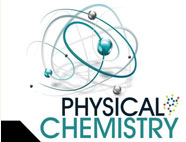


 علم الكيمياء
علم الكيمياء 
 الكيمياء التحليلية
الكيمياء التحليلية 
 الكيمياء الحياتية
الكيمياء الحياتية 
 الكيمياء العضوية
الكيمياء العضوية 
 الكيمياء الفيزيائية
الكيمياء الفيزيائية
 الكيمياء اللاعضوية
الكيمياء اللاعضوية 
 مواضيع اخرى في الكيمياء
مواضيع اخرى في الكيمياء
 الكيمياء الصناعية
الكيمياء الصناعية |
أقرأ أيضاً
التاريخ: 27-12-2016
التاريخ: 2025-01-13
التاريخ: 31-10-2019
التاريخ: 11-9-2018
|
We’re about to develop the idea of orbitals in order to understand how electrons behave in molecules, but before we go on, we should just clarify a few points about orbitals that can sometimes lead to confusion. 1. Orbitals do not need to have electrons in them—they can be vacant (there doesn’t have to be someone standing on a stair for it to exist). Helium’s two electrons fill only the 1s orbital, but an input of energy—the intense heat in the sun, for example—will make one of them hop up into the previously empty 2s, or 2p, or 3s... etc. orbitals waiting to receive them. In fact, it was observing, from earth, the energy absorbed by this process which led to the first discovery of helium in the sun. 2. Electrons may be found anywhere in an orbital except in a node. In a p orbital containing one electron, this electron may be found on either side but never in the middle. When the orbital contains two electrons, one electron doesn’t stay in one half and the other electron in the other half—both electrons could be anywhere (except in the node). 3. All these orbitals of an atom are superimposed on each other. The 1s orbital is not the middle part of the 2s orbital. The 1s and 2s orbitals are separate orbitals in their own rights and each can hold a maximum of two electrons but the 2s orbital does occupy some of the same space as the 1s orbital (and also as the 2p orbitals, come to that). Neon, for example, has ten electrons in total: two will be in the 1s orbital, two in the (much bigger) 2s orbital, and two in each of the three 2p orbitals. All these orbitals are superimposed on each other. 4. As we move across subsequent rows of the periodic table—starting with sodium—the 1s, 2s, and 2p orbitals are already filled with electrons, so we must start putting electrons into the 3s and 3p orbitals, then the 4s, 3d, and 4p orbitals. With d orbitals (and f orbitals, which start to be filled in the lanthanide series) there are yet further new arrangements of nodes. We won’t be discussing these orbitals in detail—you will find detailed consideration in an inorganic textbook—but the principles are just the same as the simple arrangements we have described.



|
|
|
|
دراسة: حفنة من الجوز يوميا تحميك من سرطان القولون
|
|
|
|
|
|
|
تنشيط أول مفاعل ملح منصهر يستعمل الثوريوم في العالم.. سباق "الأرنب والسلحفاة"
|
|
|
|
|
|
|
تثميناً لجهودهم.. العتبة العباسية المقدسة تكرِّم اللجنة التحكيمية والجهات المساهمة بمسابقة فنِّ الخطابة
|
|
|